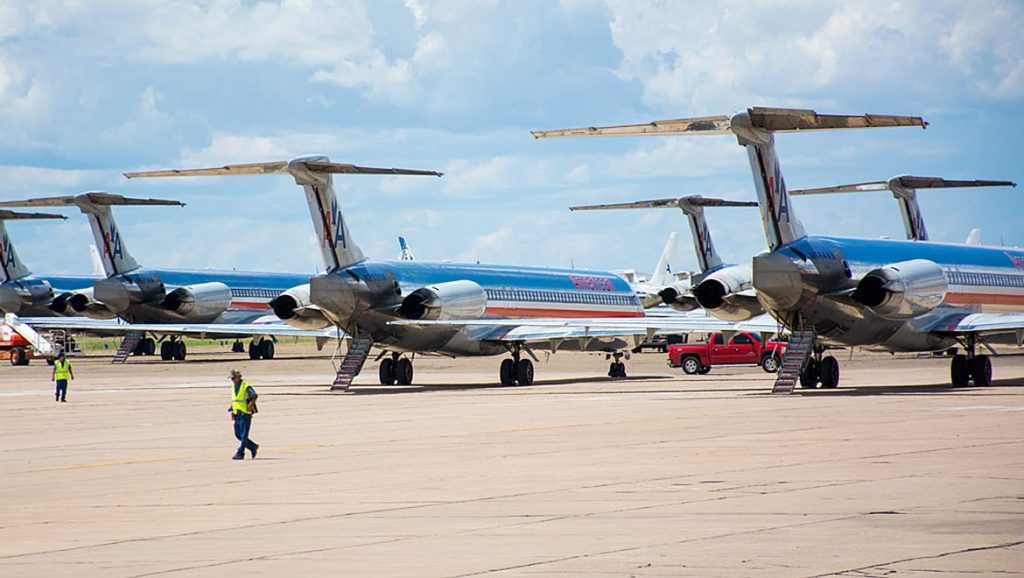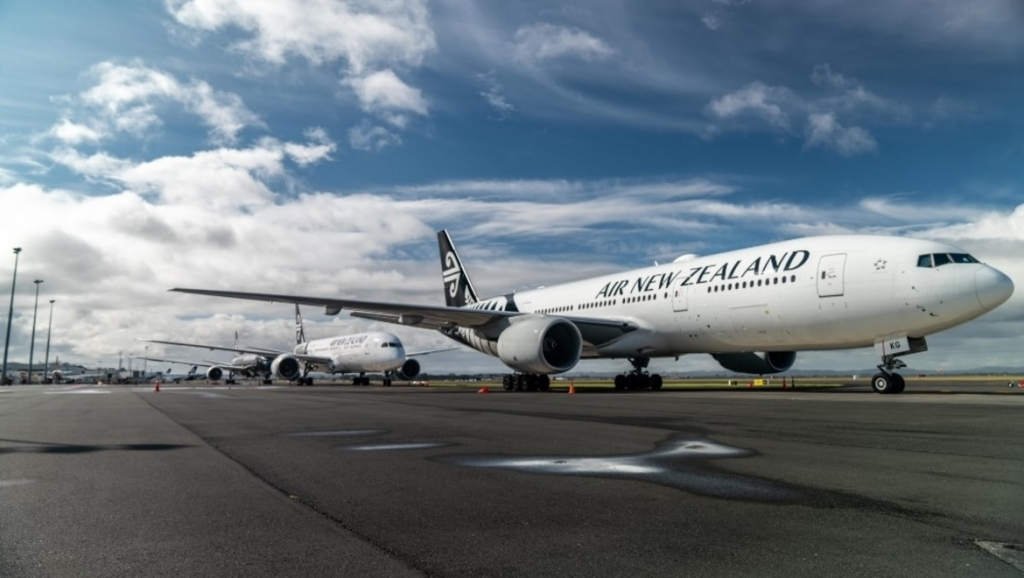SECOND WAVE SENDS AIR NEW ZEALAND 777S TO ROSWELL

American McDonnell Douglas MD-80s stored in the Roswell boneyard (www.roswell-nm.gov)
Air New Zealand has blamed the resurgence of COVID-19 for its decision to send many of its 777s to desert boneyards in Roswell, New Mexico, and Victorville, California.
The airline also announced the grounding of its entire 777 fleet would be extended from the end of 2020 until “at least” September 2021.
Now the flag carrier’s international schedule will be operated by more fuel-efficient 787 Dreamliners, with A320s and A320/21neos flying trans-Tasman and Pacific routes.
On Thursday, the business announced that four of its 777-300s will be stored at Victorville in the Californian desert, while the remaining three will stay in Auckland so they can return to service quickly if required.
The airline’s 777-200s will be housed in both Roswell and Victorville from later this month.
The desert Roswell boneyard, technically known as the Roswell International Air Center, is infamous for an apparent UFO crash on 4 July 1947.
According to reports, a “flying disk” crashed near its runway during a severe thunderstorm. Today, the town proudly displays an alien spaceship in its logo and embraces thousands of visitors a year for a number of UFO festivals.The airport was also used by Felix Baumgartner to launch his record freefall jump from the stratosphere in October 2012.
Boneyards have become a huge topic for aviation enthusiasts this year with hundreds of larger aircraft sent to the desert for long-term storage.
Desert locations are preferred by airlines for storage – either temporary or permanent – because the searing heat prevents rust and precipitation is rare.
Qantas’ last remaining 747, VH-OEJ, was sent to the Mojave Desert in California in July, while the Northern Territory government announced it would invest a further $3.5 million into its own Alice Springs facility so it can store 100 aircraft.
Air New Zealand’s COO, Carrie Hurihanganui, said, “The recent resurgence of cases in New Zealand is a reminder that this is a highly volatile situation. We are not anticipating a return to any 777 flying until September 2021 at the earliest, which is why we have made the decision to ground the fleet until at least this time next year.”
The business’ decision comes after it temporarily cut flights from Auckland in August when the city experienced an apparent second wave of infections and entered a strict ‘stage three’ lockdown.
When those flights resumed later that month, a new policy enforced wearing masks on all flights.
However, unlike Qantas and Virgin Australia, the Kiwi flag carrier is still flying internationally, albeit on a significantly reduced network.

One of Air New Zealand’s 777-200 aircraft, ZK-OKG, parked up in Auckland (Air New Zealand)
The airline is operating regular commercial services to destinations such as LA, Hong Kong, Shanghai, Sydney, Tonga and Nadi.
Last month, Australian Aviation reported how Air New Zealand recorded an enormous statutory loss before tax of $575 million (NZ$629 million) for the last financial year – but hadn’t draw down on its $824 million (NZ$900 million) government loan.
Pre-coronavirus, the airline recorded an interim profit of $181 million (NZ$198 million) for the first half of the financial year, before restrictions led to an almost three-quarter drop in passenger revenue.
Chief executive Greg Foran hailed a resurgence in domestic flying but warned, “with almost 70 per cent of our revenue derived from international flying, while border restrictions remain in place our business will continue to be significantly impacted”.



Ingen kommentarer:
Legg inn en kommentar
Merk: Bare medlemmer av denne bloggen kan legge inn en kommentar.